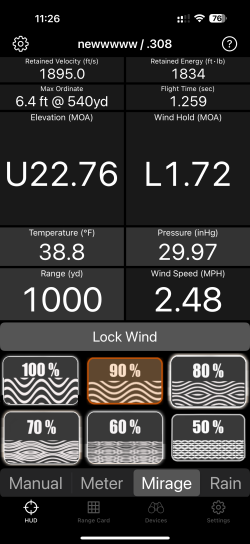med358-boise
Well-Known Member
Used the search function and couldn't find anything on this topic.
First my question is not about kestrals or other measuring devices or apps that run the calculations because those devices can only measure where they are located and even on ranges as short as 200 yards and 75 yards wide I have seen the flags be limp at 100 yards and indicating 10-12 at 200 yards or indicating 10-12 on the left side and limp on the right side.
My question is:
1) What spotting scope do you use or other device to evaluate mirage?
2) How accurate is a good wind caller - 10%, 20%, 30%
3) Do you have any rules of thumb that lead to a "no shoot" decision; e.g., @ 500 yards, I am not going to shoot in a 20 mph wind because my drift just has to high a likelihood of variation given the target size.
First my question is not about kestrals or other measuring devices or apps that run the calculations because those devices can only measure where they are located and even on ranges as short as 200 yards and 75 yards wide I have seen the flags be limp at 100 yards and indicating 10-12 at 200 yards or indicating 10-12 on the left side and limp on the right side.
My question is:
1) What spotting scope do you use or other device to evaluate mirage?
2) How accurate is a good wind caller - 10%, 20%, 30%
3) Do you have any rules of thumb that lead to a "no shoot" decision; e.g., @ 500 yards, I am not going to shoot in a 20 mph wind because my drift just has to high a likelihood of variation given the target size.
Last edited:






